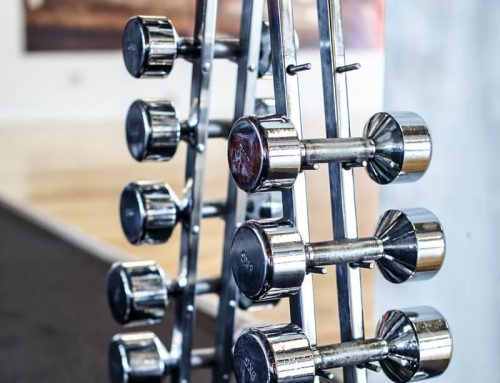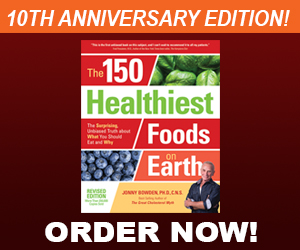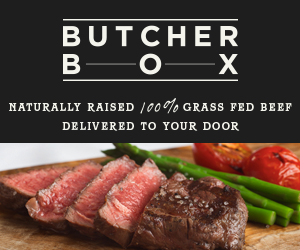Every year, the American Society of Bariatric Physicians puts on a conference, and as part of that conference there’s a one day intensive sponsored by the Nutrition and Metabolism Society.
The Nutrition and Metabolism Society exists to help fight information about the effectiveness of carbohydrate restriction on fighting diabetes and obesity. According to their website, they believe that the therapeutic potential of low carb diets for the treatment of diabetes and obesity is “under-investigated and under-utilized”. People who present at the Society’s annual meetings tend to be top-level researchers who are sympathetic to the low-carb approach.
I attend the society’s annual meeting as often as possible, and recently attended their meeting in San Diego, where I learned a number of interesting things from the sterling list of presenters which included such superstars as…
- Gary Taubes, author of Why We Get Fat.
- Jeff Volek from the University of Connecticut
- Donald Layman from the Department of Food Science and Human Nutrition at the University of Illinois
- Patty Siri-Tarino of the Children’s Hospital Oakland Research Institute.
In this blog post, I’d like to pass on the highlights of what I learned at the conference. I hope these lessons are as valuable to you as they were to me.
- Percent protein in the diet is meaningless. We need to measure protein in terms of absolutes, i.e. how many grams a day do you need, not what percentage of the diet they are. A diet that sounds like a high protein diet—i.e. “40% protein”—may not be. For example, 40% of a 1000 calorie diet is nota high protein diet. Protein only matters in terms of absolute numbers, not percentages.
- It takes 30 grams of protein per meal to create muscle turnover. Less, and you’re just adding calories. If you want protein to do the job of building muscle you need 30 grams per sitting. This doesn’t mean saving it up and eating 60 or 90 grams at dinner, which is the typical American way. It means divided doses during the day, at two or three meals. Donald Layman, PhD, one of the outstanding researchers who presented at the conference, calls this amount the “Protein Threshold”. The protein threshold explains why many women who are eating an egg at breakfast with their cereal and think they’re having plenty of protein are actually not losing weight or changing their bodies. It’s just not enough. And although you won’t look like Mr. Olympia just by eating protein, body composition studies do show that there’s a slight amount of change in body composition favoring lean tissue over fat when higher protein diets are consumed, even in the absence of exercise.
- Obesity is driven by snacking.Period. It’s not the “three squares” it’s the stuff in between. And the old gym mythology about the need to “eat every two or three hours” is thankfully being re-examined. Americans don’t understand the concept of “mini-meals”, and in any case, most people do not require constant refueling every couple of hours. Give your body a chance to relax and your blood sugar and insulin a chance to normalize. If you eat the right stuff at your meals, you shouldn’t be hungry for snacks anyway. And packaged snack foods, with few exceptions, rank right up there with sodas, French fries, trans fats and sugar as the worst things you can possibly put into your body.
- If you’re hungry between breakfast and lunch it was because your breakfast sucked. Seriously, and that’s the exact words used by the professor presenting this information. He’s right. Higher protein breakfasts with lower carbs (i.e. bread, potatoes and cereal) and more fat will keep you satisfied till lunch. Especially when there are eggs involved.
- Observational studies are ALWAYS going to confirm the conventional wisdom.What happens is this. Researchers lump a bunch of stuff that everyone believes is healthy—i.e. fruits, vegetables, whole grains, legumes—and then they ask people how many times a week they eat like that. And surprise: the people who eat like that tend to be healthier. Bam.But people who listen to the standard recommendations and follow them are health conscious people, and they alsotend to follow recommendations to exercise and not smoke. This is called the “healthy person” effect. So surprise, the people who follow health recommendations tend to be healthier, even when some of these recommendations (i.e. don’t eat cholesterol) are pure BS.Lumping all that supposedly “good” stuff together doesn’t really tell us much about any one of them and tends to paint some questionable stuff with the “halo” effect from the reallygood stuff. Whole grains, for example, could have absolutely nothing to do with these folks being healthy, but they’re going along for the ride cause they’re lumped with fruits, vegetables, fish and exercise all of which are undeniably good. Similarly, on the other side, saturated fat might have nothing to do with being unhealthy, but it gets lumped in with things like smoking, eating processed meats and not exercising (i.e. “people who smoked, didn’t exercise and ate more saturated fat tended to have more heart disease”.)So maybe we should start evaluating these things in a new light and not assume that because something like “grains” gets classed with the real winners it’s necessarily a real winner by default, and something like saturated fat that gets classed with the real losers is necessarily a real loser as well.
- Patterns mean more than food groups. This may seem to contradict what I said in number 6 about evaluating foods and habits separately, and maybe it does a bit. But it’s becoming more and more clear that food patternsmatter more than any one thing you eat. It’s not necessarily the blueberries, but the blueberries plus the spinach plus the grass-fed meat plus the three times a week exercise that’s making the difference. Lots of studies just look at food frequency—how many times a week did you eat eggs.But food frequency studies frankly suck. People who eat free range eggs together with a ton of vegetables and lots of grass-fed butter are not the same people who are eating eggs from McDonald’s with a double side of fries and toast. Both may score the same in the “egg frequency” category but their patternsof eating (not to mention their lifestyle) are vastly different, and it’s those patterns that are appearing to be most important in health outcomes.
- Next huge topic in weight loss and health: microflora. Just a week before the conference we had had that big controversial red meat study that essentially said, OK guys, it’s not the fat and cholesterol in red meat that’s bad after all, it’s other compounds that are worked on by gut flora that create cancer causing compounds like TMAO. That study—flaws and all (and there were a lot of flaws!)—did us a great service by shining a light on a neglected component of health that is turning out to have a huge influence on weight gain and obesity. Evidence was presented at the conference that shows how important this new avenue of research on gut flora is going to be.Dr. David Williams, whose newsletter I read regularly, reported this month on a study suggesting that a gastric bypass patient’s weight loss isn’t caused by the stomach not being able to hold as much food, but rather because the surgery changes the types of microbes in the gut. Dr. Williams writes: “In the study, after performing gastric bypass surgery on about a dozen obese test animals, researchers observed the characteristic loss of body fat, and it stayed off even when the animals were fed a diet that should have resulted in weight gain.” He’s one of my favorite health writers.)That microbes in the gut would affect your weight makes a lot of sense when you think about it. As Dr. Williams points out, “The less efficient your body is at converting food into energy, the more you have to consume to stay alive”.And keeping your gut flora healthy seems to me the most basic level of maintenance and prevention you can do. Surely as research accumulates, we’ll know much more about what particular strains of probiotics are involved in what particular metabolic operations and in what particular ways and how they might affect weight gain or loss; but while we’re waiting for that research to translate into practical advice I think it makes sense to supplement with probiotics on a daily basis.I do myself, and for those who are curious, I use HLC high potency powder by Pharmax which I sprinkle over full-fat yogurt, berries, dark cherries, almonds and coconut just about every day.)
So there you have it. This conference—like every other one I attend—just underlines the fact that we don’t have all the answers yet, and that anyone who thinks we do doesn’t know what he’s talking about.
And maybe “the answer” doesn’t exist. Rather, maybe the “answer” to any particular health concern may turn out to be a highly individual one that depends on many different factors.
And maybe the best way to find that “answer” is to keep learning, keep an open mind, and be willing to throw out ancient, encrusted theories—like the one that says saturated fat and cholesterol cause heart disease.
These theories have outlived their usefulness, and as long as we cling to them with eyes firmly shut, we won’t see the real answers as they slowly emerge.













Hi Jonny,big fan been following paleo now for a few months and have been following you on twitter.question for you if you don’t mind.my friend artie 42 years young recently suffered a heart attack.he is recovering nicely.his doctors in Connecticut told him two things to never do smoke and eat red meat…can all the cardio docs and surgeons be wrong jonny? I mean they all advocate eating red meat ..confused in Connecticut…thx jeff
hi jeff
well they’re certainly right about smoking, and there’s certainly a bunch of studies LINKING red meat to problems– but God is in the details. I NEVER recommend commercial, factory farmed red meat– it’s loaded with steroids, hormones and antibiotics, high in inflammatory omega-6’s and absent of omega-3’s. But grass-fed meat is a whole different story. PERSONALLY i don’t think grass-fed meat has any downsides, but most cardio docs don’t realize the distinction. Anyway, that’s how i eat and that’s my personal opinion. But remember, patterns of eating are more important than any one food. Many of the studies implicating red meat are done with people whose patterns are to eat lots of processed meats like bolonga and no vegetables and no fiber. That’s very different from some grass fed buffalo, a ton of vegetables, legumes, omega-3’s and low or no sugar.
warmly
jb
Jonny,
I found this post extremely interesting! A few questions come to mind:
1. Is the ’30g of protein min for each meal’ age and/or gender dependant?
2. So when my athletes go to Smoothie King and get an extra scoop of whey protein does that now mean that b/c its total is still less than 30g of protein that it’s just calories?
3. Where would protein intake and recovery fit in?
4. Last but not least regarding snacking between meals…does this apply to growing kids as well? My nine year old son is already a bottomless pit and eats pretty healthy meals.
Looking forward to learning more about all of your work and resources!
Thanks,
Jeremy
Thank you for sharing all this with us. Most of the information reinforces information I”ve already read but I’m fascinated by the protein intake recommendation. Even back in the day when I first started this journey the recommendation by both Atkins and The Eades was, I think 20 g of protein. I’ll be looking to make a few changes because of this…I always have creeping lbs that I need to beat back…and see if this makes a difference.
Thanks for all your efforts.
Keren
Can you talk about how to get those 30 grams of protein in at one sitting? One egg is only 6 grams. My protein drink mix has 15 per serving. Feels a little overwhelming.
Try a whey protein drink, or a few eggs, or some combination. And don’t sweat it.. it’s not a magic number, just a general recommendation that he used in a lot of weight loss research
warmly
jb
I just did the conversion on 30 grams on the internet because I don’t get visuals when it comes to metrics. It said 30 grams = 1.06 ounces. That doesn’t seem like much protein. I was told by my new low carb doctor that she thinks women should not eat more than 3 ounces of meat per meal. That anything past that can cause an insulin response. But you seem to be saying we should eat even less than 3 ounces per meal. Am I misunderstanding something?
But what I really want to know is if women have trouble building muscle after menopause? I am going through menopause (age 52) and have not exercised in years because of back pain. I want to start to exercise again. Is my body going to work against me now in building muscle since I’m getting a bit older?
i know, this is confusing. One of the reasons that it’s confusing is that we’re confusing weight with protein content. For example, an OUNCe of anything– meat, water, salt– is 28 grams. But an ounce of meat also contains some water, some gristle, some fat… so not all of that ounce is protein. Approximately 7 grams of the 28 grams is protein, so we figure about 7 grams of protein per ounce of meat, poultry, fish, etc. So three ounces of meat– while it WEIGHS 28 x 3 grams (84 grams), only delivers 21 grams of protein.
Many low carb folks agree with your doctor, particularly those who try for ketosis, which a lot of protein can prevent. But others don’t. I do think 3-4 ounces per meal is a good amount, though.
As far as building muscle when you’re older, sure, it’s always more challenging than when you’re twenty, but take a look at some of the incredibly muscular and fit people in their sixties and seventies. It can be done@! just takes a bit of work!
warmly
jb
Hi Jonny,
So with that protein thing, 30 gram threshold: if one egg has 6 grams of protein, are you saying I should eat 5 eggs for breakfast?
You should try and reach 30 grams per meal?
Thanks!
That’s Donald Layman’s theory, and his research supports it for weight loss. I don’t know that it’s true that EVERY meal must have just this amount, but i do believe most of us don’t eat enough protein for breakfast. I frequently do a buffalo burger, or a grass-fed burger, or a couple three eggs, sometimes with some fruit, sometimes with some oatmeal, sometimes with neither. Experiment and see what you feel best on.
warmly
jb
The evidence supports a conclusion that carnatine is good for a damaged heart in the short run, but TMAO resulting from bacterial activity in the gut is believed to contribute to hardening of the arteries, producing long-term harm to cardiovascular health. This is not inconsistent with your ideas or any of the cited studies. The trick is to get carnatine into the system without supporting the gut bacteria producing TMAO.
Really interesting blog post. I’ve lost about 12 pounds in the last year by cutting back on carbs and following a regular exercise routine. I usually eat either Greek yogurt or a protein smoothie for breakfast and find that I have to have a snack before lunch. What do you recommend for breakfast to get the 30 g of protein? Neither of these choices has that much protein and even 2 eggs would fall short — though I do find eating eggs to be filling.
Thanks!
Loved the article, Jonny. It makes sense and is taking weight loss to an even more sophisticated level. Interesting point about skipping the snacks and sticking with only 3 meals. Personally, I think the two snacks are important and necessary when first transitioning to a healthier diet until one is consistently balancing their blood sugar. After that first 4 to 8 eight weeks and having established a healthy eating habit, I feel it is appropriate to then cut out the two healthy snacks and stick to only 3 meals a day.
What are your comments on skipping the 2 snacks approach? Thanks, Jonny.
I think the 30gr of protein (per meal) is too much. Not because I hate protein, but because it’s difficult to obtain just eating regular food. I believe if we NEED something, it is easily provided by natural food. I would have to force myself to eat enough, and it would be over my caloric recommendation. UNLESS I use a supplement that does not occur naturally. I try to eat naturally occuring foods, as close to their original state as possible. It would be very difficult for me to get 30grams of protein per sitting. Unless there is some plant or creature out there that has 30gr of protein per serving, it’s not listed on the internet. I’ve looked!
30 grams of protein is about 4 ounces of meat or chicken.
warmly
jb
Is Dr. Layman’s prescription of 90 grams of protein per day for the average sized male or for every adult of every size – male or female? I eat a low carb diet and am a petite female ( 5′ 3″ tall and 103 pounds)– I generally eat about 80 grams per day — sometimes more. How do we low carbers square all the conflicting advice on protein? Dr. Rosedale for example would say I am overdoing protein, Dr. Layman would say I don’t eat enough. I’m a bit confused…
indeed! You should’ve been at the conference where Layman presented on the same day as Volek– with very different recommendations! Fact is, we’ll never get everyone to agree on all this, so we do the best we can. They’re not ALL that far apart. Rosedale (and Volek) prefer higher fat, moderate protein, Layman likes higher protein, moderate fat, but all agree that too many carbs is bad, bad, bad!
warmly
jb
its a great article, no doubt, but one size doesnt fit all. ive found eating micro meals throughout the day works for me and has helped me to lose weight. as long as i dont overdo calories, fat and carbs im fine.
and that’s precisely the point! I’m a big believer in “if it ain’t broke, don’t fix it”. Sounds like your plan works like a dream for you so you should keep doing exactly what you’re doing!!
warmly
jb
I agree with most of your general recommendations – which I learned after reading the breakthrough book “The Paleo Diet” by my friend Loren Cordain, PhD. However, one component which is NEVER discussed is the cost factor of eating healthy. It is fine to discuss free-frange this and non-pesticide that. Affording it is quite another matter regardless of alleged trade-offs from not buying “unhealthy” products. No offense, but not everyone is a multi-millionnaire nutritionist. Whole Foods (which certainly does sell plenty of unhealthy stuff that would not fit into your diet regime) charges 2x to 3x for any free-range meat or egg/dairy product than a typical supermarket. Plus, the added inconvenience of getting there since natural foods stores are outnumbered 1000:1 or more depending on geographic location. I do what I can, but doubling my weekly grocery bill does not create anything but instant pain.
Dear Jonny,
Love reading your articles. I am a sports nutritionist running my own GYM in INDIA. I have read your book “150 Healthiest foods…” and recommend people to read it also. your blog articles help me a lot too.
Can you please help me with some good vegetarian options to get this 30 gm protein at each meal. I do have lot of heavy weight lifters so their protein requirement is more than this and few are pure vegetarians.
Also, I have used your Whey protein while i was in Chicago but now am living in India so no option.
Can you suggest something good?
Thank you
Radhika
Try seitain, ” wheat meat” as long as they are not gluten sensitive. it’s very high on protein. And you have tofu as well. Maybe tempeh ( or however it’s spelled).
But seitain is very high in protein and easily made at home, especially if you have gluten available.
Hi please I need something for my legs muscle and arm
they are skiny but I don’t want to gaing weigh
Great read as usual. I agree that quality of the food chosen is of far greater importance than just counting eggs eaten as part of a burger meal count towards your daily intake of eggs.
I like number 1 and 2. The Institute of Medicine and National Academics recommends a protein intake of 0.36 grams per pound of body weight (I converted the 0.8 g/kg body weight recommendation) with more needed for athletes that train intensely. Anything more then that is usually turned to fat instead of muscle. Plus too much protein can be hard on your kidneys (whey shakes).
Secondly the part about microflora is interesting, I just got asked about this by a client! I will definitely need to research it more!
Thanks as always for the great post!
Great information! I never knew that we should be eating 30 grams of protein PER meal, I had been eating a large portion at night but now I’ll try to spread it out more throughout the day. What kind of foods do you recommend for getting this much protein everyday?